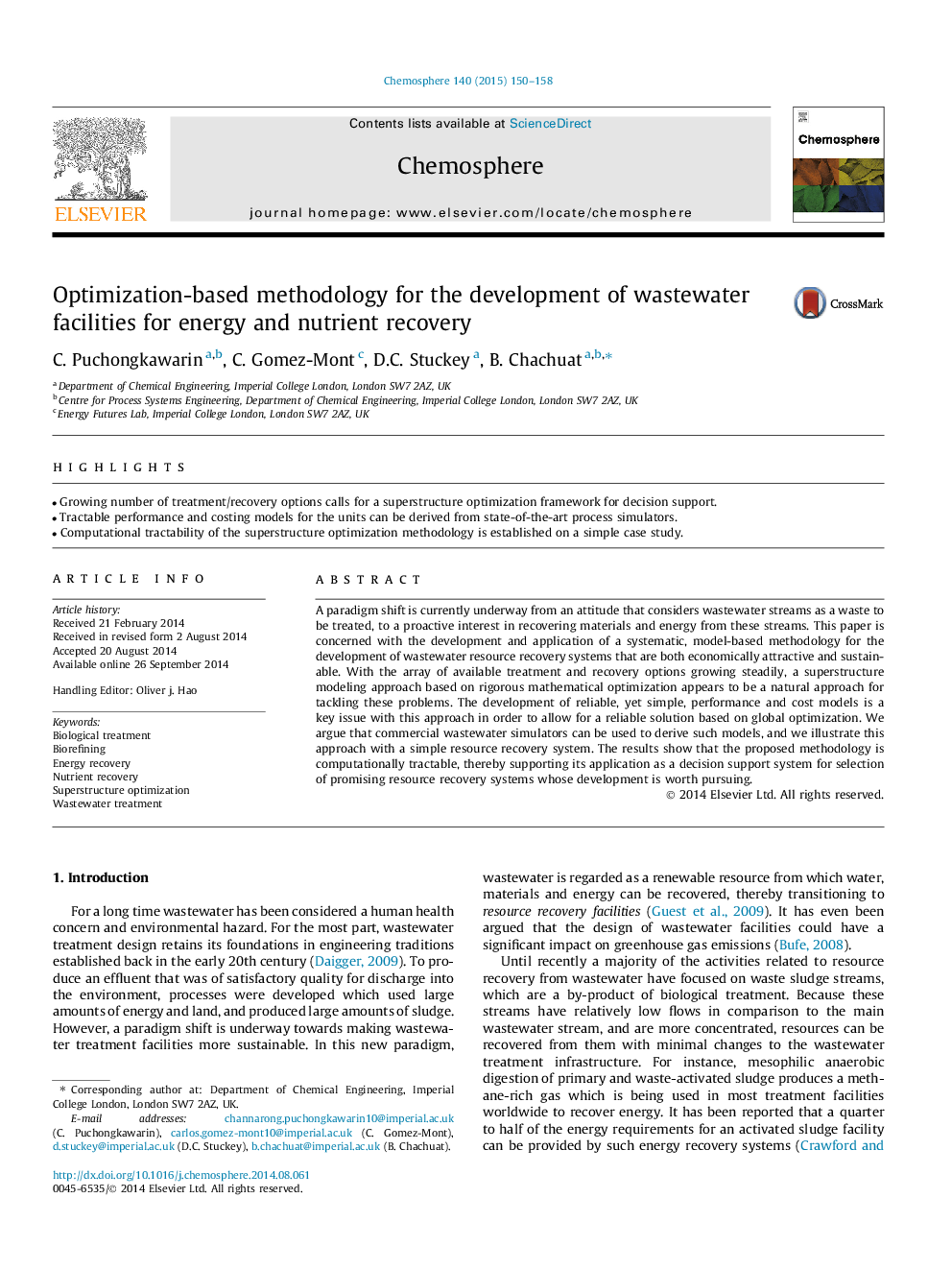| Article ID | Journal | Published Year | Pages | File Type |
|---|---|---|---|---|
| 4408113 | Chemosphere | 2015 | 9 Pages |
•Growing number of treatment/recovery options calls for a superstructure optimization framework for decision support.•Tractable performance and costing models for the units can be derived from state-of-the-art process simulators.•Computational tractability of the superstructure optimization methodology is established on a simple case study.
A paradigm shift is currently underway from an attitude that considers wastewater streams as a waste to be treated, to a proactive interest in recovering materials and energy from these streams. This paper is concerned with the development and application of a systematic, model-based methodology for the development of wastewater resource recovery systems that are both economically attractive and sustainable. With the array of available treatment and recovery options growing steadily, a superstructure modeling approach based on rigorous mathematical optimization appears to be a natural approach for tackling these problems. The development of reliable, yet simple, performance and cost models is a key issue with this approach in order to allow for a reliable solution based on global optimization. We argue that commercial wastewater simulators can be used to derive such models, and we illustrate this approach with a simple resource recovery system. The results show that the proposed methodology is computationally tractable, thereby supporting its application as a decision support system for selection of promising resource recovery systems whose development is worth pursuing.
